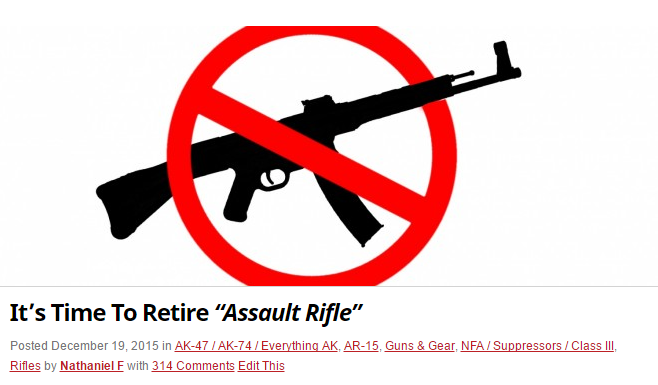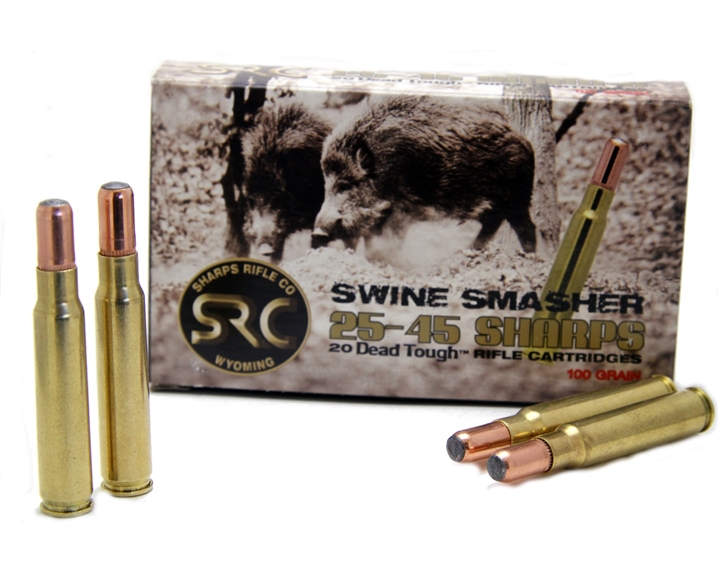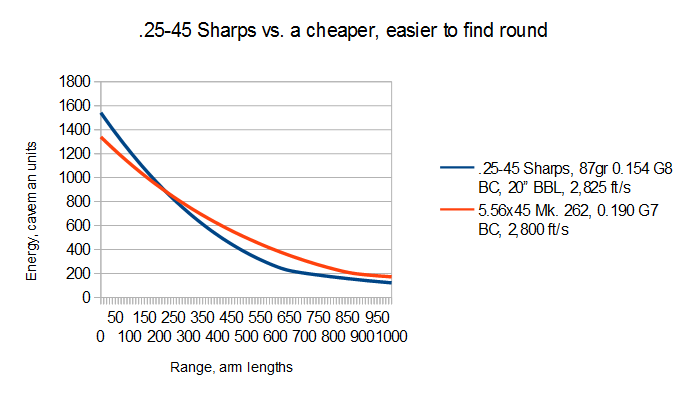This is one of those posts I’ve been meaning to get to for a while, but haven’t really felt the urge to write.
The subject came up recently* in my comments, though, and I really enjoy responding to people, so I might as well kill these two birds with one stone. This won’t be an in-depth analysis like that infamous article I wrote on the 6.8mm SPC, but something a little more lighthearted.

Because the last time I tried to be funny went SO well…
Have you ever seen the movie Kung-POW! Enter the Fist? I haven’t, but there is this scene in that movie:
.25-45 Sharps is sort of like Wimp Lo. Purposefully designed wrong as a joke. At least, I hope.
Sharps’ quarterbore round is based on the .223 Remington, using the same case head and brass, with the same case length and overall length – the only real change is that the caliber has been increased from 0.224″ to 0.257″. That means, to fit inside the cartridge’s envelope, bullets for the .25-45 Sharps have to be short and stubby for their size, a characteristic shared by such ballistic wonders as the .30-30 Winchester, and .30 Carbine.
Unlike .30-30, though, .25-45 Sharps is a new caliber, and one that shooters have to go out of their way to use, at that. Let’s face it, the ol’ .30-30 WCF has the ballistics of a dropped potato, but at least it makes up for that with ubiquity. The .25-45 Sharps? Nope.
Sharps Rifle Company (or rather, the company that is wearing Sharps’ tanned skin on their face name) claims that the .25-45 Sharps is capable of high velocities of around 3,000 ft/s with 87 gr bullets, although there seems to be some confusion as to what barrel length gives those velocities:
…
broadswordgroup.com, site of the parent company of SRC.
Those are coincidentally the exact numbers originally advertised for the much larger .250-3000 Savage round when it was introduced in 1915, a cartridge that has a dramatically larger case with much greater internal volume – 47 grains H2O, versus the 31 grains of the .25-45 Sharps, to be exact. Somehow, Sharps found a way to get the .25-45 to perform like a round with 50% more internal volume, possibly through mystical Eastern arts involving a backspace key.

SAAMI, on the other hand, does not seem to have unlocked the secret of magical unicorn fart propellant yet.
So what’s the point of a rifle cartridge that you can’t find, that can only fire dumpy, low-BC bullets, and which probably won’t give its advertised performance from your rifle? Well, Sharps claims:
Just like the famously brush-busting .250-3000, right?
Finally, we get to the name. Sharps takes the Dream of the 1890s to a whole new level with “.25-45”, mimicking the 19th Century naming convention of caliber followed by charge in blackpowder. Apparently not content with the name “.25-27”, however, Sharps altered the format by changing the number after the dash to the case’s length in millimeters, further proving that hipsters can’t decide which is cooler, Europeans, or the Time of Cholera.
Really, at that point why not just name it the 32.5 Microfurlong Center Fire?

One nice thing I will say about the .25-45 Sharps, the 100gr “Swine Smasher” load looks delightfully retro. Sort of like a teeny weeny Patrone M88.
More seriously, the .25-45 Sharps isn’t really that bad, and I’m sure that someone somewhere will get some use out of it (it’s legal for deer hunting in all 50 states! Something Sharps was sure to stamp all over their marketing lit), but it doesn’t really seem like there’s a strong case for the round to exist. Sharps has tried very hard to convince us that the .25-45 is an old friend, like the .45-70, .44-40, or .30-30, even going so far as to appropriate the name of one of America’s great & gone gunmakers in the process. The problem for Sharps is that we put up with the dumpy performance of calibers like the .30-30 not only because they follow naming conventions dating to the time of our great-great-great-grandparents, but also because we can find them on the shelves of every gun store in America.
So, I ask: What’s the point of an uninspiring newcomer like the .25-45 Sharps? Besides selling uppers for SRC, I mean.
*EDIT: This actually has been sitting in my drafts folder, completed, for over a month. Better late than never, I guess!
 Your Privacy Choices
Your Privacy Choices






